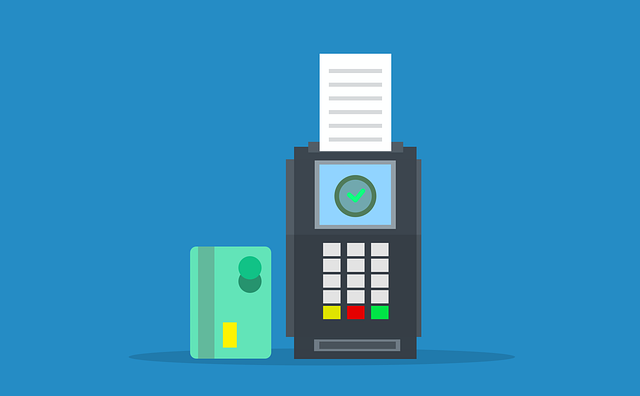XRP Transaction Processing Service: Scalable Payments in 2025
Author: Jameson Richman Expert
Published On: 2025-11-20
Prepared by Jameson Richman and our team of experts with over a decade of experience in cryptocurrency and digital asset analysis. Learn more about us.
Summary: This comprehensive guide explains how an xrp transaction processing service works, why XRP is attractive for payments in 2025, and how to design, optimize, secure, and scale a production-ready processing service. You’ll get practical architecture patterns, performance and cost optimization tips, compliance considerations, monitoring strategies, and recommended resources to start integrating XRP into payment rails or remittance solutions.

What is an XRP Transaction Processing Service?
An xrp transaction processing service is a technical and operational system that accepts, routes, settles, and reconciles payments using the XRP Ledger (XRPL) as a settlement layer or liquidity bridge. Such a service typically exposes APIs for clients (merchants, remitters, wallets), manages XRP and fiat liquidity, handles transaction signing and submission, monitors confirmations and finality, and provides reconciliation and reporting.
Unlike custodial wallets or simple on-chain broadcasters, a mature processing service includes redundancy, compliance controls, risk management, liquidity sourcing (including exchange integration), and developer-facing features like webhooks, idempotency, and retries.
Why Choose XRP for Transaction Processing in 2025?
- Speed and finality: XRPL consensus closes in seconds (commonly 3–5s), enabling fast settlement compared to Bitcoin and classic bank rails.
- Low transaction cost: Typical fees are fractions of a cent, which is ideal for micropayments and high-frequency flows.
- Built-in payment features: XRPL supports payment channels, escrows, and pathfinding for multi-currency settlements.
- Scalability potential: The XRPL’s architecture supports high throughput (the network is designed to handle many transactions per second when properly provisioned).
- On-demand Liquidity (ODL): XRP can be used as a bridge asset between fiat pairs, reducing the need for pre-funded accounts in every currency corridor.
For a technical overview of the XRPL consensus and capabilities, see the XRPL documentation (xrpl.org) and the XRP entry on Wikipedia.
Core Components of a Production-Ready XRP Transaction Processing Service
At a high level, a robust processing service contains these components:
- API layer — REST/WebSocket APIs for clients, authentication, rate limiting, request validation, and idempotency keys.
- Node infrastructure — One or more XRPL validator-capable nodes (rippled) for submitting transactions and querying ledger state. Use geographically distributed nodes for resiliency.
- Transaction engine — Queueing, signing (secure key management), nonce handling, and retry/backoff logic.
- Liquidity management — Integration with exchanges and market makers to source XRP and fiat liquidity and to perform automated conversions or hedging.
- Custody & key management — HSMs or secure vaults for private keys, hardware wallets for cold storage, or third-party custodians if required by regulation.
- Compliance & KYC — Identity verification, AML screening (sanctions lists), transaction monitoring, and record-keeping.
- Reconciliation & reporting — Ledger watchers, webhook callbacks, accounting exports, and dispute handling.
- Monitoring & observability — Metrics (throughput, latency, queue depth), logs, alerting, and dashboards (Prometheus/Grafana, ELK).
Optional features
- Payment channels for micropayments and reduced on-chain transactions.
- Escrows and conditional payments.
- Support for issued currencies on XRPL for tokenized fiat or stablecoins.
- Automated pathfinding for optimal currency conversion using available liquidity.

Designing Architecture: Step-by-Step
Below is a practical architecture pattern for an enterprise-grade XRP processing service.
- Front-facing API layer: Load-balanced REST API for payment creation, status checks, and webhook configuration. Use authentication tokens and per-client quotas.
- Ingress queue & worker pool: Incoming payments are placed into durable queues (e.g., Kafka, RabbitMQ). Workers handle business logic, prepare XRPL transactions, and pass to the signing service.
- Signing service & key security: Centralized signing runs in an isolated environment with keys stored in an HSM or KMS (AWS KMS, Google KMS). Consider multi-signature for high-value accounts.
- XRPL node cluster: Multiple read-only nodes for low-latency ledger queries and one or more write-capable nodes for transaction submission. Separate validator nodes if you plan to participate in consensus.
- Liquidity & exchange adapters: Market-making bots or adapters connecting to exchanges (REST/WebSocket) to maintain fiat/XRP pools and to execute on-demand conversions.
- Post-settlement processing: Ledger watcher that confirms finality, updates bookkeeping, and triggers customer notifications/webhooks.
- Admin interface: Monitoring, manual settlement tools, risk controls, and exception handling dashboards.
Practical Integration Patterns and Examples
Here are common integration scenarios and pragmatic tips.
Merchant Payments
- Merchants call your API to create an invoice denominated in fiat. Your service calculates an XRP amount (or amount in an issued currency) at the current FX rate, reserving liquidity where needed.
- Generate a unique XRP payment address or InvoiceID memo. Monitor for incoming payments using ledger subscriptions and a webhook to the merchant on finality.
- Offer auto-conversion to fiat via on-demand liquidity or exchange conversion to limit merchant exposure to XRP volatility.
Cross-Border Remittances
- Use XRP as the bridge currency to settle between two fiat corridors, reducing the need to hold large balances in both currencies.
- Automate execution via pre-configured rails to local payout partners or exchanges to deliver local currency to beneficiaries.
Micropayments and Pay-per-use
- Use payment channels to minimize on-ledger transactions. Set channel expiration and net settlement rules for periodic reconciliation.
Performance Optimization and Cost Management
Optimization is a blend of technical tuning and economic choices. Key strategies include:
- Batching: Consolidate outgoing payments when possible to reduce on-chain submissions.
- Payment channels: For frequent small transfers between the same parties, channels reduce ledger writes and lower costs.
- Pathfinding & aggregator routing: Use XRPL pathfinding to find the cheapest route for the required currency pair. If internal liquidity exists, route internally before using market conversions.
- Fee strategy: XRPL fees are small, but spikes can occur under load. Implement dynamic fee selection and retry logic to avoid overpriced submissions.
- Liquidity pooling: Maintain well-distributed liquidity across corridors to avoid expensive last-minute conversions.
Example: A remittance provider could set a policy to convert incoming fiat to XRP only once per hour when internal pools fall below threshold, instead of converting per transaction, saving on spread and fees.

Security, Custody, and Compliance
Security and regulatory compliance are critical.
Key Management
- Use hardware security modules (HSMs) or cloud KMS with strict access policies for production signing keys.
- Consider multi-signature accounts for treasury and high-value operations. Keep cold wallets offline and enforce air-gapped signing for major withdrawals.
AML, KYC, and Sanctions Screening
- Implement identity verification for business and retail customers as required by jurisdictions.
- Use automated sanctions and PEP screening and maintain audit logs for all transactions.
- Monitor behavioral patterns and implement transaction limits, velocity checks, and alerting for suspicious activity.
Legal
Work with counsel to interpret local crypto regulations, licensing requirements (money transmitter, payments licenses), and tax obligations. Keep clear audit trails and retention policies.
Exchange Integration and On/Off Ramps
Efficient on/off ramps are the backbone of liquidity management. Integrate with reputable exchanges and OTC desks to source and sell XRP.
- Recommended exchanges for acquiring and converting XRP (affiliate links):
- Register on Binance — global liquidity and deep order books.
- MEXC — regional liquidity and competitive fees.
- Bitget — derivatives and spot liquidity.
- Bybit — deep order books and ODL partners.
When integrating exchanges, use their WebSocket APIs for real-time order book and trade updates. Implement automated market-making and hedging logic to manage exposure.
Monitoring, Logging, and SLA
Operational excellence depends on strong observability:
- Track key metrics: submission rate, confirmations per minute, average confirmation time, failed transaction rate, queue depth, and wallet balance thresholds.
- Use dashboards (Prometheus + Grafana) and structured logs (ELK). Set alert thresholds for anomalies and outages.
- Implement SLA guarantees in commercial agreements and design for graceful degradation (queueing, delayed settlement notifications) during partial outages.

Risk Management & Reconciliation
Design reconciliation flows to confirm every ledger event is accounted for. Run periodic matching between on-chain events and internal ledgers. Implement reconciliation for:
- Inbound payments (check sequence, PaymentID/memos)
- Outbound settlements and delegated conversions
- Exchange fills and custody movements
Use unique tags/memos for every client transaction to avoid attribution ambiguity and simplify dispute resolution.
Real-World Use Cases and Examples
Here are a few realistic use cases that illustrate how an xrp transaction processing service adds value:
- International remittance startup: uses XRPL for cross-border settlement, reducing pre-funded nostro requirements and cutting latency from days to seconds for settlement between rails connected to local payout partners.
- Mobile gaming platform: integrates payment channels for in-game assets, enabling microtransactions with minimal on-chain cost and instant confirmation for gameplay flows.
- Marketplace payouts: automates payouts to global sellers through XRPL, converting XRP to local fiat at the time of payout via exchange integrations to minimize FX exposure.
Comparing XRP with Bitcoin and Ethereum for Payment Processing
High-level trade-offs:
- Latency: XRP (seconds) < Ethereum (seconds–minutes under load) < Bitcoin (minutes).
- Fees: XRP (fractional cents) < Ethereum (variable gas; can be high during congestion) < Bitcoin (often higher than XRP).
- Finality: XRP provides rapid consensus finality; Ethereum and Bitcoin rely on block confirmations to reduce reorg risk.
- Smart contract capabilities: Ethereum is more flexible for complex on-chain logic; XRPL supports payment primitives but not general EVM smart contracts (though XRPL has features like Escrow and Hooks proposals evolving the ledger).

Scaling to Millions of Transactions
To scale, focus on horizontal scaling, robust queuing, and minimizing synchronous dependencies:
- Decouple client-facing APIs from transaction submission using message queues and worker autoscaling.
- Cache ledger state where possible to reduce node pressure; maintain sufficient read nodes across regions.
- Use batching and channels to reduce transaction count on the ledger.
- Implement backpressure and informative rate-limit responses to clients to avoid systemic overload.
Future Trends and the 2025 Outlook
2025 will likely bring continued institutional adoption, better regulatory clarity, and deeper integration between XRPL and traditional finance rails. Notable trends to watch:
- Improved developer tooling and middleware for on-chain/off-chain reconciliation.
- Wider adoption of tokenized fiat / stablecoins on XRPL for instant fiat-denominated settlement.
- Better aggregator services and AMMs to reduce spread and improve pathfinding for cross-currency flows.
- Increased focus on compliance tooling (transaction labeling, sanctions checks) integrated into processing stacks.
Getting Started Checklist — Launching an XRP Transaction Processing Service
- Define your product: remittance, merchant gateway, micropayments, or payouts.
- Establish legal and regulatory requirements in operating jurisdictions.
- Set up XRPL nodes (rippled) and a signing environment using HSM/KMS.
- Integrate with at least two exchange partners for liquidity and redundancy.
- Implement compliance (KYC/AML) and real-time monitoring.
- Build API endpoints with idempotency, webhook callbacks, and developer docs.
- Load test the system under realistic traffic and simulate failure modes.
- Publish SLAs and operational runbooks for incident response.
For developers and ops teams, the XRPL developer docs (xrpl.org) are essential. Also consider reading practical guides and market commentary to shape your operational playbook.

Further Reading and Tools
- XRPL Developer Documentation — technical specs, API references, and best practices.
- XRP — Wikipedia — background and history.
- Operational tooling: Prometheus, Grafana, ELK stack, and Sentry for error tracking.
Related Guides and Resources
Practical guides that complement this article:
- Bybit desktop app guide — useful if you integrate Bybit as a liquidity or on-ramp partner.
- ETH queue wait time explained — good comparison for handling congestion and queue strategies on other networks.
- Trading signals 2025 guide — useful for teams managing internal trading and market-making strategies.
- ETH trading bot Telegram setup — an example of automating trading flows which can inspire liquidity bot designs.
Recommended Exchanges & On-Ramp Partners
Integration with reputable exchanges reduces slippage and execution risk. Consider the following partners (affiliate links):
- Binance — global liquidity
- MEXC — competitive fees and regional liquidity
- Bitget — derivatives and spot
- Bybit — deep order books and institutional services
Operational Pitfalls to Avoid
- Underestimating regulatory compliance: Cross-border payments often trigger strict AML and licensing regimes.
- Single exchange dependence: Relying on one liquidity source exposes you to counterparty and availability risk.
- Poor key management: Storing private keys insecurely or without redundancy invites irreversible loss.
- Insufficient monitoring: Missed alerts on liquidity exhaustion or node outages can cause payment failures and reputational damage.

Conclusion
An xrp transaction processing service can deliver high-speed, low-cost settlements that suit remittances, merchant payments, micropayments, and cross-border liquidity workflows in 2025 and beyond. Success depends on building a resilient architecture, ensuring robust security and compliance, integrating diversified liquidity partners, and investing in observability and automation. Use the resources and patterns in this guide to plan a phased, test-driven rollout, and pair on-chain settlement with practical off-chain operations to deliver reliable, scalable payment experiences.
Ready to start? Register with recommended exchanges for liquidity and experiment with XRPL testnet and production nodes. And keep learning — check the developer docs and the related guides linked above for hands-on examples and deeper operational tactics.